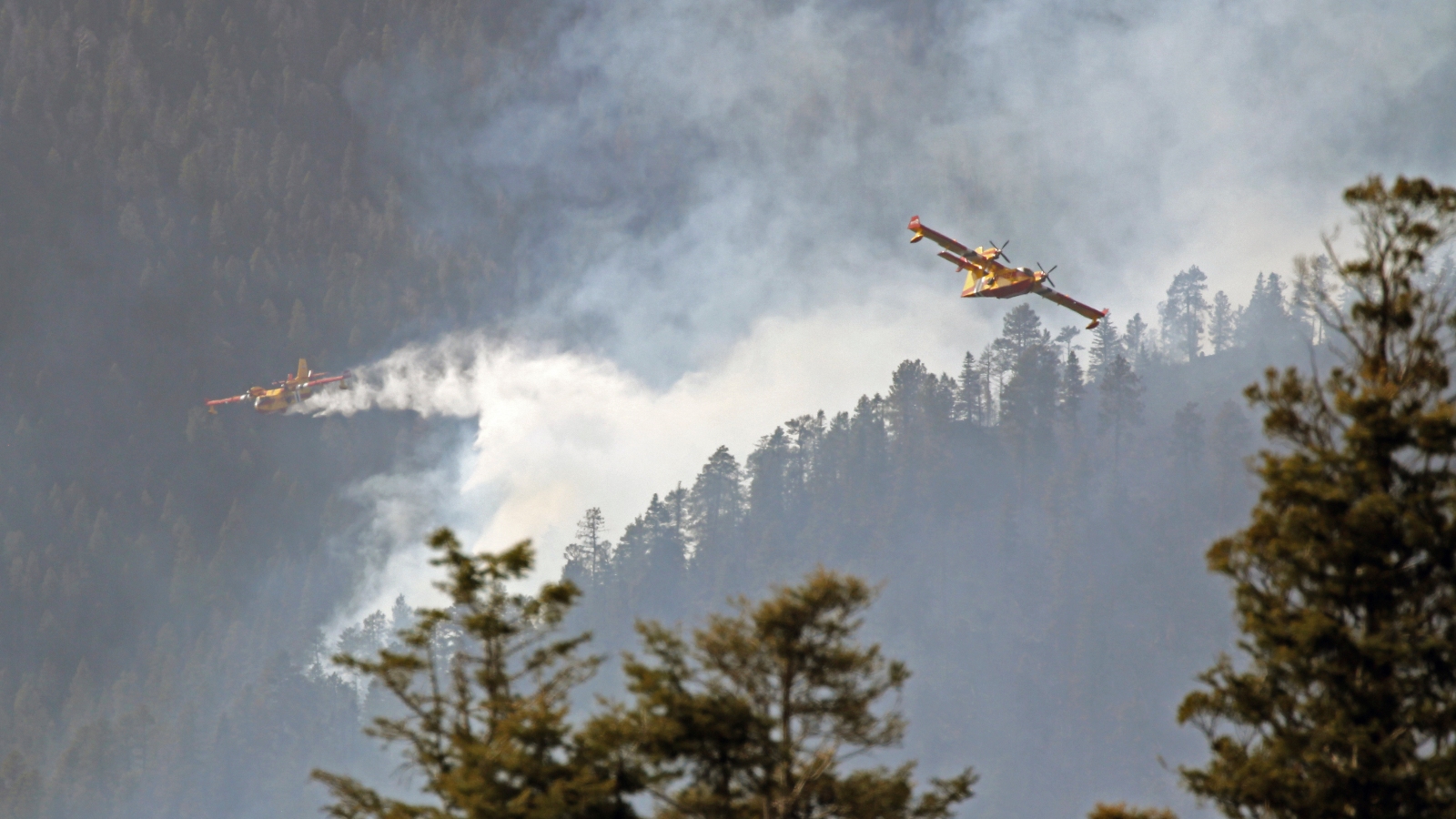This story is part of the Grist series Parched, an in-depth look at how climate change-fueled drought is reshaping communities, economies, and ecosystems.
An early-season blaze has turned into New Mexico’s second-largest on record, torching more than 165,000 acres. And the Calf Canyon fire, the biggest burning in the United States, is one of six wildfires in New Mexico right now, a worrying start to what’s expected to be an unusually intense wildfire season in the West.
President Joe Biden declared a “major disaster” for the state on Wednesday, offering federal resources to help with recovery efforts. East of Santa Fe, the Calf Canyon fire has burned hundreds of buildings and prompted the evacuation of 6,000 homes. Evacuees left behind goats, rabbits, and dogs, while those who took pets with them struggled to find places to stay.
It’s been an abnormally fiery spring in the United States, with fires burning across Florida, Texas, and Colorado in March. As of early May, wildfires had already torched 1.1 million acres in the U.S., double that of the same time last year.
The fires in New Mexico are being fueled by wicked winds as well as searing drought and warmer than average temperatures exacerbated by climate change. A megadrought is currently plaguing the Southwest, a region that is experiencing its driest period in 1,200 years. So it should not come as a surprise that this year’s wildfire season is promising to be another ferocious one.
A forecast released from AccuWeather on Wednesday predicts above-normal wildfire activity for the western United States, exacerbated by hot temperatures and a dry winter. Some relief may come from La Niña patterns this summer, which will bring monsoon rains — but also lightning strikes, potentially igniting more infernos.
Climate change has amped up fires in recent years, with arid conditions and hot temperatures scorching vegetation and fueling ones that burn hotter and longer. The number of blazes that burn around the world could rise 50 percent by the end of the century, according to a report from the United Nations Environment Programme in February.
The Calf Canyon fire in New Mexico is the largest blaze the country has seen so far this year. Last week, it merged with the Hermits Peak fire, and as it grows, it could threaten 15,000 homes. The region at risk in northern New Mexico is home to descendants of Spanish settlers and Indigenous people who have lived in the mountains for centuries.
The state’s largest fire occurred in 2012, when the Whitewater-Baldy fire torched close to 300,000 acres. In New Mexico as a whole, roughly that same amount of land has gone up in flames this year — more than the last two years combined.
“We’ve already burned more acreage than we do on average for an entire season, and it’s now just the first week of May,” Brian Guyer, a meteorologist at the Weather Service office in Albuquerque, told the Washington Post. “Usually our biggest fires are in May and early June.”



